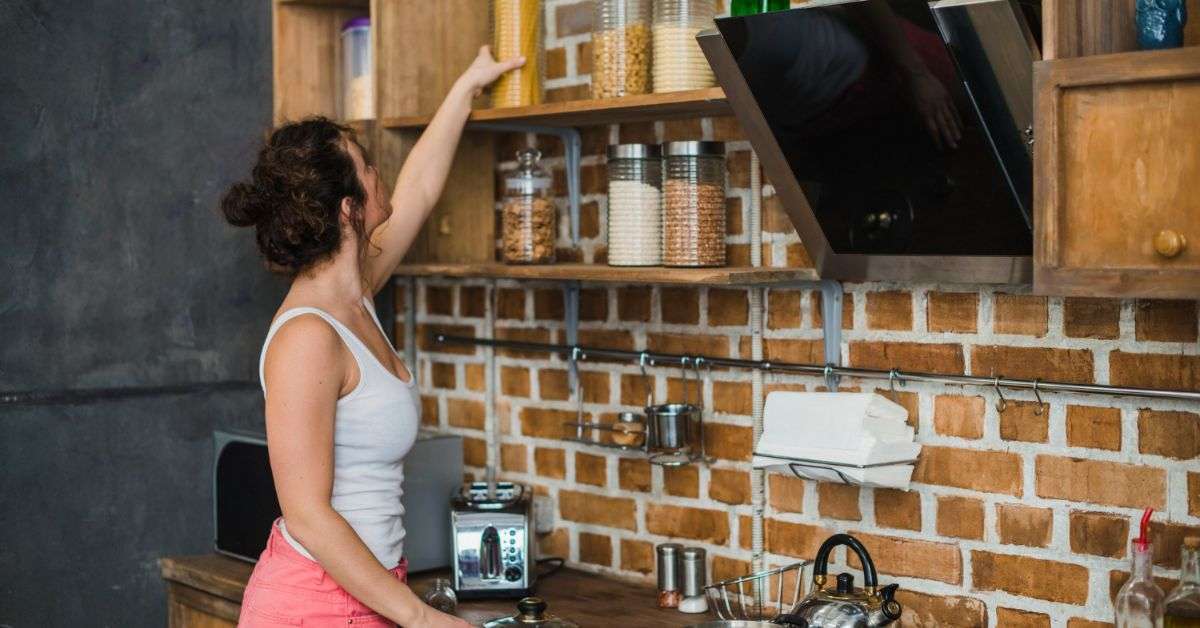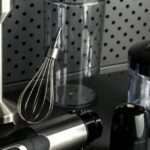Organizing your kitchen can be a daunting task, but with the right approach, it can be a breeze. A well-organized kitchen can make cooking and meal prep more efficient, saving you time and energy.
Also Read
Whether you have a small or large kitchen, there are plenty of strategies you can use to maximize your space and keep everything in order.

One of the first steps in organizing your kitchen is to declutter. Get rid of any items that are broken, unused, or expired. This will free up space and make it easier to see what you have. Once you’ve decluttered, it’s time to start organizing.
Group similar items together, such as spices, baking supplies, and utensils. Consider using drawer dividers, shelf risers, and other organizational tools to make the most of your space.
Another key to kitchen organization is to keep your countertops clear. This not only makes your kitchen look neater but also gives you more space to work. Store appliances and other items that you don’t use regularly in cabinets or on shelves.
Keep frequently used items, such as cutting boards and utensils, within easy reach. By following these tips, you can create a well-organized kitchen that makes cooking and meal prep a pleasure.
Assessing Your Kitchen Space

Before tackling the task of organizing your kitchen, it’s important to assess your available space. This will help you determine what items you need to keep, what can be discarded, and how to best utilize your storage areas.
Here are some tips to help you assess your kitchen space:
Measure Your Cabinets and Drawers
Start by measuring the cabinets and drawers in your kitchen. This will give you an idea of how much space you have to work with. Use these measurements to determine what items can fit in each storage area.
Take Stock of Your Kitchen Items
Next, take stock of all the items in your kitchen. This includes dishes, utensils, appliances, and food items. Sort through everything and decide what you want to keep, what can be donated or sold, and what needs to be thrown away.
Consider Your Cooking Habits
Think about your cooking habits and what items you use most frequently. Keep these items easily accessible in your cabinets and drawers. Less frequently used items can be stored in harder-to-reach areas.
Use Vertical Space
Make use of vertical space in your cabinets and drawers by adding shelf risers, hooks, and other organizers. This will help maximize your storage space and keep items organized.
Keep Countertops Clear
Finally, aim to keep your countertops as clear as possible. This will help create a more organized and functional kitchen. Only keep items on the countertop that you use on a daily basis. Other items can be stored in cabinets or drawers.
Decluttering Your Kitchen
A cluttered kitchen can be overwhelming and stressful. Decluttering your kitchen can help you create a more organized and functional space. Here are some tips to help you declutter your kitchen:
Assess Your Kitchen Clutter
The first step in decluttering your kitchen is to assess the clutter. Take a look at your kitchen and identify areas that need to be decluttered. This may include countertops, cabinets, drawers, and pantry.
Sort and Categorize
Once you have identified the areas that need to be decluttered, it’s time to sort and categorize. Start by taking everything out of the cabinets, drawers, and pantry. Sort items into categories such as utensils, dishes, appliances, and food items.
Keep, Donate, or Discard
As you sort through your items, decide whether to keep, donate, or discard each item. Be honest with yourself and only keep items that you use and love.
Consider donating items that are in good condition but no longer serve a purpose in your kitchen. Discard items that are broken, expired, or no longer usable.
Organize Your Kitchen
Once you have decluttered your kitchen, it’s time to organize. Consider using storage solutions such as drawer dividers, cabinet organizers, and pantry bins to keep your items organized and easily accessible. Labeling containers and shelves can also help you stay organized.
Maintain Your Kitchen
To keep your kitchen clutter-free, it’s important to maintain your organization system. Take a few minutes each day to put items back in their designated places and wipe down countertops and surfaces. Regularly go through your items and donate or discard anything that is no longer needed.
By following these tips, you can declutter and organize your kitchen for a more functional and stress-free space.
Categorizing Kitchen Items
One of the most important steps in organizing a kitchen is categorizing items. Grouping similar items together makes it easier to find what you need and keep track of what you have.
Here are some sub-sections to consider when categorizing your kitchen items:
Utensils
Utensils are essential tools for cooking and serving food. Categorize them by type, such as spoons, spatulas, tongs, and whisks. Consider using a utensil holder or drawer organizer to keep them neatly organized.
Cookware
Cookware includes pots, pans, baking sheets, and other items used for cooking. Categorize them by type and size, and consider storing them in a cabinet or on a pot rack. Use dividers or shelf risers to maximize space and keep them organized.
Food Items
Food items include dry goods, canned goods, and perishable items. Categorize them by type, such as grains, pasta, canned vegetables, and fresh produce. Consider using clear containers or labels to keep track of expiration dates and prevent waste.
Cleaning Supplies
Cleaning supplies include dish soap, sponges, and other items used for cleaning the kitchen. Categorize them by type and consider storing them in a cabinet or on a shelf. Use a caddy or organizer to keep them together and easily accessible.
Appliances
Appliances include small appliances like toasters and blenders as well as larger appliances like refrigerators and ovens.
Categorize them by type and consider storing them on a counter or in a cabinet. Use cord organizers or labels to keep them organized and prevent tangled cords.
By categorizing kitchen items, you can create a more organized and efficient space. Take the time to sort through your items and find a system that works for you.
With a little effort and planning, you can transform your kitchen into a functional and enjoyable space.
Creating Efficient Work Zones
When it comes to organizing a kitchen, creating efficient work zones is crucial. By dividing the kitchen into zones, you can streamline your cooking process and make meal preparation much easier. Here are the four essential zones to consider when organizing your kitchen:
Cooking Zone
The cooking zone is where all the action happens. It should be located near your stove and oven, and it should contain all the tools and utensils you need to cook your meals.
In this zone, you should keep your pots, pans, Dutch ovens, and works. You should also have a wok-turner, spatulas, and assorted wooden spoons on hand.
Preparation Zone
The preparation zone is where you’ll do all your chopping, slicing, and dicing. It should be located near your cooking zone, so you can easily transfer ingredients from one area to the other.
In this zone, you should keep all your cutting boards, knives, and other prep tools. You should also have a space for your oils, salt, pepper, sugar, spices, and condiments.
Cleaning Zone
The cleaning zone is where you’ll do all your dishwashing and cleaning. It should be located near your sink and dishwasher, so you can easily rinse and wash your dishes.
In this zone, you should keep all your dish soap, sponges, and cleaning supplies. You should also have a space for your dish towels and drying rack.
Storage Zone
The storage zone is where you’ll keep all your food and pantry items. It should be located near your cooking and preparation zones, so you can easily access your ingredients.
In this zone, you should keep all your dry goods, canned goods, and snacks. You should also have a space for your baking supplies, such as flour, sugar, and baking soda.
By creating these four essential zones in your kitchen, you can make meal preparation much easier and more efficient. You’ll be able to find everything you need quickly, and you’ll be able to move from one task to another with ease.
Implementing Storage Solutions
When it comes to organizing a kitchen, implementing storage solutions is key. Here are some storage solutions to consider:
Shelving
Shelving is a great way to maximize storage space in a kitchen. Open shelves can be used to store dishes, glasses, and other kitchen items. They can also be used to display decorative items such as cookbooks and plants.
When installing shelves, it’s important to consider the weight of the items that will be stored on them. Heavy items should be placed on lower shelves to avoid accidents.
Racks
Racks can be used to store pots, pans, and other kitchen utensils. Hanging racks can be installed from the ceiling or mounted on the wall.
They are a great way to save space in a small kitchen. Magnetic knife racks can also be used to store knives and other metal utensils.
Drawers
Drawers are essential for storing utensils, cutlery, and other small kitchen items. Drawer dividers can be used to separate items and keep them organized. Deep drawers can be used to store pots, pans, and other bulky items.
Cabinets
Cabinets are a great way to store food items, dishes, and other kitchen items out of sight. When organizing cabinets, it’s important to group items together by category.
For example, all baking supplies should be stored together in one cabinet. Lazy Susans can be used to maximize space in corner cabinets.
Pull-out shelves can also be installed in cabinets to make it easier to access items in the back.
By implementing these storage solutions, a kitchen can be organized and functional. It’s important to consider the specific needs of the kitchen and the items that need to be stored when choosing storage solutions.
Maintaining Your Organized Kitchen
Once you have organized your kitchen, it is important to maintain it. Here are some tips to help you keep your kitchen organized:
Clean as You Go
Cleaning as you go is a great way to maintain your organized kitchen. After cooking, wash the dishes, wipe down the countertops, and put away any ingredients or appliances you used.
This will prevent clutter from building up and keep your kitchen looking neat and tidy.
Regularly Check Your Storage
Regularly check your storage areas to make sure everything is in its place. If you notice anything out of place, take the time to put it back where it belongs. This will help prevent clutter from building up and make it easier to find what you need when you need it.
Use Labels
Labels are a great way to help you maintain your organized kitchen. Label your storage containers, drawers, and cabinets to make it easier to find what you need. This will also help you remember where everything goes, so you can put it back in its proper place.
Keep Countertops Clear
Keeping your countertops clear is an important part of maintaining your organized kitchen. Only keep appliances and ingredients that you use regularly on the countertop. Store everything else in cabinets or drawers to prevent clutter from building up.
Involve Everyone
Finally, involve everyone in your household in maintaining your organized kitchen. Encourage everyone to put things back where they belong and to clean up after themselves.
This will help prevent clutter from building up and make it easier for everyone to find what they need when they need it.
By following these tips, you can maintain your organized kitchen and enjoy a clutter-free space.





2 thoughts on “How to Organize Your Kitchen: Simple Tips and Tricks”
Comments are closed.